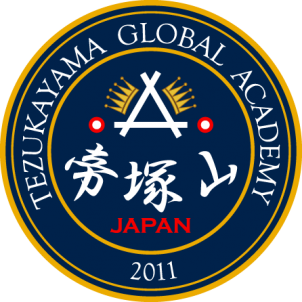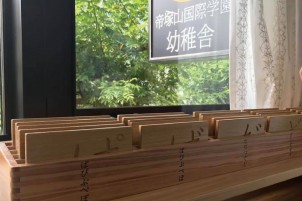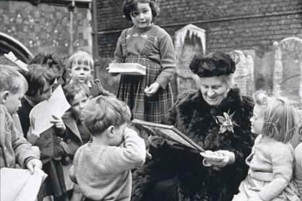TGA Montessori Subjects
Subjects
The scope and sequence of the Montessori Children’s House curriculum is embodied in the sets of materials displayed on open shelves at the children’s level in the Children’s House and in the sequence in which these materials are typically presented to the children. The resources and activities in the Children’s House are organised into four main areas:
- The exercises of practical life
- The exercises of the senses
- Language
- Mathematics
Also incorporated into these areas are resources and activities that introduce children to visual arts, music, physical education, science, geography and history.
I. Montessori Toddler (Ages 2 - 3 Years)
1. Montessori Toddlers A & B
This curriculum begins with an overview of considerations that apply specifically to toddler students. Cognitive, motor, and sensory activities designed to appeal to the interests and abilities of toddlers follow the introduction. Some of the topics covered include:
* Observing changes in toddlers indicating readiness for activities
* Examples of preparing the environment for toddlers
* Special considerations when presenting activities to toddlers
* How to adjust to an toddler’s changing needs
* Activities to develop cognitive skills, including matching, assembling, tracing, observing, and more
* Activities to develop motor skills, including transferring, clipping, stringing, wrapping, and more
* Activities to develop sensory abilities, including identifying colors, matching, recognizing sounds, determining smells, and more
On the other hand, the Toddler B completes the portion of the program that applies specifically to stude nts. The curriculum includes detailed language, social, and practical life activities designed to appeal particularly to the interests and abilities of toddlers. Some of the topics covered include:
* Introduction to presenting language activities for toddlers
* Activities to develop language skills, including naming parts of the body, retrieving objects, naming pictures and colors, beginning to count, phonetic sounds, matching objects to cards, and more
* Introduction to presenting social activities for toddlers
* Activities to develop social skills, including passing objects, facial expressions, recognizing feelings, following instructions, and more
* Introduction to presenting practical life activities for toddlers
* Activities to develop practical life skills, including rolling a mat, wiping spills, sweeping up, self care, serving food, and more
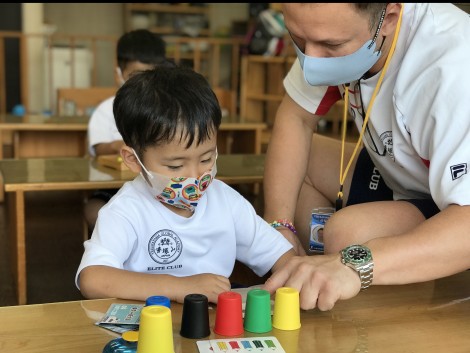
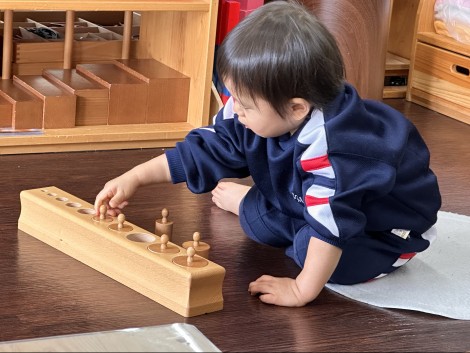
1. Montessori Twos A & B
It starts with an overview of considerations that apply specifically to toddler children. Cognitive, motor, and sensory activities designed to appeal to the interests and abilities of two-year-olds follow the introduction. Some of the topics covered include:
* Observing changes in two-year-olds indicating readiness for activities
* Examples of preparing the environment for two-year-olds
* Special considerations when presenting activities to two-year-olds
* How to adjust to a two-year-old’s changing needs
* Activities to develop cognitive skills, including sorting, carrying, manipulating, associating, and more
* Activities to develop motor skills, including cutting, throwing, balancing, spooning, and more
* Activities to develop sensory abilities, including matching objects, exploring textures, observing nature, discriminating between shapes, and more
Montessori Twos B, completes the portion of the program that applies specifically to two-year-olds from 24–36 months. It includes 30 detailed language, social, and practical life activities designed to appeal particularly to the interests and abilities of two-year-olds. Some of the topics covered include:
* Introduction to presenting language activities for two-year-olds
* Activities to develop language skills, including identifying pictures, phonetic sounds, number booklets, storytelling, and more
* Introduction to presenting social activities for two-year-olds
* Activities to develop social skills, including please and thank you, planning a trip, group art, recognizing emotions, and more
* Introduction to presenting practical life activities for two-year-olds
* Activities to develop practical life skills, including fastening clothes, washing objects, preparing food, sewing, polishing, and more


II. Montessori Early Childhood (Ages 3 - 4 Years)
1. Montessori Practical Life
Through the Practical Life activities, a child learns valuable skills he/she can use in daily life such as setting a table, brushing teeth, and caring for plants. A wide range of practical, real-life activities are offered that guide your child toward independence and being able to proudly say, “I can do it myself.” While your child learns these important life skills, he/she is also developing a number of other important abilities, including:
* Fine and gross motor skills
* Concentration
* Coordination
* A sense of order
* Independence


2. Montessori Sensorial
The Sensorial curriculum focuses on the development and refinement of your child’s senses. The activities and materials in the Sensorial curriculum help your child develop recognition of differences in color, brightness, depth, loudness, tone, texture, and all of the other sensory differences that humans experience. The Sensorial curriculum also includes a music component that introduces your child to different musical instruments – and even encourages your child to make his/her own! Also explored in this section are the concepts of rhythm and silence. As your child works on the Sensorial activities, he/she also learns to think, judge, associate, and compare – and this supports the development of his/her abstract thinking, preparing him/her for future work in math and language arts.
* Visual activities
* Tactile activities
* Auditory activities
* Olfactory activities
* Three-period lesson

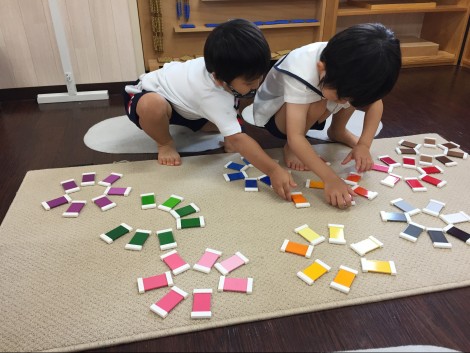
3. Montessori Culture and Science
The Culture and Science curriculum gives your child the opportunity to learn about the world and his/her place in it, working with activities in geography, history, botany, zoology, and chemistry. These exciting activities appeal to your child’s sense of exploration and will foster a love of learning. Together you will gain an appreciation for the beauty of the world, its inhabitants, and the way it works.
* Nomenclature cards
* Exploring physical and cultural geography
* Exploring the passage of time
* Investigating animals, classification, and caring for them
* Investigating the plant world
* Hands-on experiments for active participation


4. Montessori Language Art
The Language Arts curriculum focuses on the pivotal components of language — oral development, writing, parts of speech, and reading. The easy to implement activities carefully build your child’s understanding of language in a methodical and logical system. As you work with your child on these activities, he/she will quickly develop a love of language and the skills required to read confidently.
* Building oral language skills
* Vocabulary enrichment
* Playing sound games
* Learning letter sounds and graphics
* Learning to write words, phrases, sentences, stories
* Learning to read
* Practicing fine motor skills for writing
* Learning about parts of speech


5. Montessori Mathematics
Using a range of specifically designed Montessori materials, the activities in the Mathematics curriculum provide your child with a strong understanding of mathematics and develop his/her skills in logic and abstract thought. Some of the proven learning outcomes of the Montessori Mathematics curriculum include:
* Understanding the concept of quantities
* Recognizing the written symbols of numbers
* Comprehending place values from units to 1,000s
* Counting to 100
* Adding, subtracting, multiplying, and dividing with four-digit numbers
* Memorizing basic math facts in addition, subtraction, multiplication, and division


III. Montessori Early Elementary (Ages 6 - 9 Years)
1. Montessori Advanced Practical Life
Advanced Practical Life curriculum offer a bridge between the hands-on activities of the early childhood environment and the increasingly abstract ideas presented in the elementary programs. The activities help students develop and practice skills that benefit their work in other parts of the curriculum by increasing their level of concentration and fine motor skills, for example. Learning real-life skills such as gardening, cooking, making crafts, and organizing larger projects, the students also develop independence, social competence, and a sense of responsibility.


2. Montessori Language Arts
Language Art curriculum builds on the strong foundation of the early childhood program, continuing the students' work with Montessori materials such as the grammar symbols and introducing new materials such as the grammar boxes and sentence analysis chart I. In addition to mastering the skills of writing, reading, and penmanship, students extensively explore word study, the mechanics of writing, and grammar to further enhance their understanding of language and their ability to communication effectively.


3. Montessori Mathematics
Mathematics 1 continues the work that began in the Montessori early childhood environment, exploring basic math facts and the four operations through the use of hands-on Montessori materials. The curriculum gives students the opportunity to work on increasingly complex and abstract arthimetric concepts, involving larger numbers and place value, by manipulating more abstract materials.
On the other hands, Montessori mathematics 2 continues the students' exploration of mathematical concepts, focusing on fractions and geometry. The students gain a thorough understanding of fractions and then learn how to perform operations involving fractions unsing Fraction Skittles, Fraction Circles, and other hands-on Montessori materials. The geometry activities also focus on presenting new and increasingly complex ideas through the manipulation of Montessori materials. Concepts are presented in a concrete and sensorial manner through the use of a combination of familiar and new materials, including the Geometric Cabinet, Constructive triangles, Geometry Sticks, Geometric Solids, and more.


4. Montessori History
The History curriculum invites students to explore the concept of time moving from a concrete discussion to the more abstract and complex study to timelines - both of life and of people. Students are also introduced to civilizations throughout time, sparking their interest and preparing them for further research. Intertwined with this is a study of the common needs of people and how they apply to each time period.


5. Montessori Phyical & Cultural Geography
The Lower Elementary Physical Geography curriculum builds on the knowledge students developed in the early childhood program, moving from concrete to a more abstract understanding of our planet. Students study the earth's physical environment and the processes that form its features through the study of maps, the earth and the sun, the atmosphere, the hydrosphere, and the lithosphere. Through their active exploration, students gain an appreciation of the world's beauty, its frigile ecosystem, and the power of nature.
On the other hand, the Cultural Geography focuses on the people and regions of earth and provides students with a different lens through which to view our world. Students explore each og the continents, the people who live there, and cultural celebrations, learning how people affect the earth over time as they immigrate, redefine political borders, start new industries, and the use of earth's natural resources.


6. Montessori Zoology
This curriculum embraces Dr. Montessori's understanding that elementary-age children have an increased interest in classification by focusing on activities that give students opportunities to explore animal classification. Beginning with a holistic overview of the animal kingdom, the curriculum then progresses through more specific animal classifications, presenting the wonders of the animal world in an engaging and thought-provoking manner. The students are also encouraged to consider the connection between humans and animals and interdependence of life.


7. Montessori Botany
The botany curriculum nurtures the students' fascination with nature through the exploration of plants and their functions. Through experimentation and activities, students learn that plants are a key component to sustaining life on earth and further their understanding of the important connection plants have to humans and animals. The final section of this curriculum presents microscopic examination, introducing students to the wonders of organisms that can only be studied with the aid of a microscope.


8. Montessori Matter and Astronomy
Supernovasm stars, asteroids, meteors, satellites, and galaxies! Working with curriculum, students discover the wonder and power of a tiny atom and all its potential. This comprehensive curriculum provides a range of activities to explore the mysteries of the universe, discover many answers to why and how things exit and behave, and seek further answers to questions that inevitably arise.


9. Health Sciences, Art and Music
There is no doubt that, a healthy mind, body, and spirit are essential elements for success on the universal path of progress and development. The Health Sciences activities encompass a holistic approach to health, presenting students with the information they need to understand the value of taking care of themselves physically, mentally, and emotionally.
The Art and Music section of this course serves as a valuable resource for Montessori educator to build imaginative, artistic projects into their curriculum and to inspire children to explore their own creativity as a means of expression. Our world needs to continue to encourage creative problem-solvers and craftpeople who strive for a harmonious balance between progress and beauty.


10. Montessori Science Experiments
Science is a subject that allows not only the student to discover and spark natural curiosity in themselves but for the students to develop a passion and hunger to learn as much as they can because they genuinely want to. This result will not occur for all subjects, but science is where that curiosity aspect of education is often ignited and lit through other subjects such as history, language, etc.



